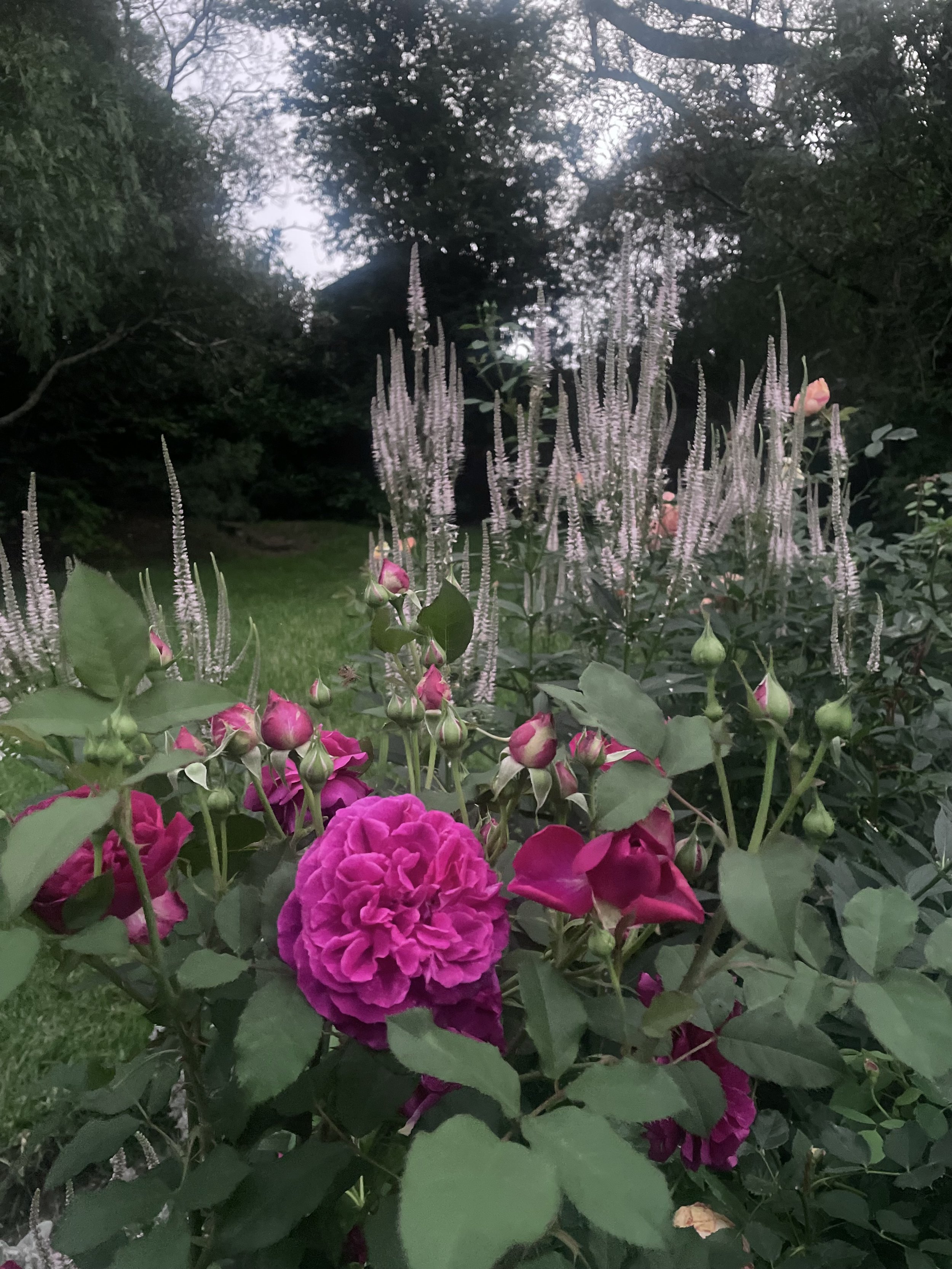The last few years since January 2020 have been ones of almost continual rain here- and we are lucky that we are on the side of a hill and not in a flood plane, like so many that have been badly effected by floods. We knew when we moved in that there was a natural spring half way up the garden (the land used to be called ‘Spring Hill’) but nothing quite prepared me for the mud and muck and boggy soil that was to come. I think before this area of Blackheath was cleared (and planted with orchards) our garden must have been a hanging swamp!
So a lot of things I planted in what was dry dust in 2019 (that we amended with truck loads of organic matter) haven’t survived - but I wanted to share some of the success and failures, in the areas of our back garden with the poorest drainage (there is a clay layer beneath the soil, and with all this constant rain there are sections that stay completely waterlogged and deprived of oxygen). When I realised how boggy it was getting I removed the dying Salvias, Penstemons, Echinops, Campanula, Cistus etc. and replaced them with some plants that do not resent having such wet feet.
Successes:
My roses seemed to be soldiering on, and look really very healthy, despite some balling badly (R. ‘Earth Angel’) in the constant heavy rain.
Filipendula rubra - also known as Queen of the Prairie. I chose this spectacular plant because its natural habitat is apparently ‘calcareous fens’ - which are rare peat wetlands fed by underground springs that pass through calcium rich rock such as limestone, unsurprisingly it is thriving, (albeit with the addition of lime- as my soil is very acidic). Hopefully it won’t take over the whole plot!
Alchemilla mollis - seems to love it.
Viburnum opulus ‘Sterile’. - I saw the guelder rose on a list for wet soils and it is really thriving- have planted some more.
Lythrum virgatum ‘Rose Queen’ - as a wetland weed, I figured the loosestrife would be able to cope. And so it has. I have also read it it a bit of a thug so I am careful to cut off flowers before they turn to seed.
The Veronicastrum virginicum ‘Pink Glow’ I planted also seems very healthy. The Echinacea I planted in front of it (such a pretty combination) is not as happy as I thought it would be, but I am going to persevere as perhaps the summer will hopefully be a bit dryer? We can only hope.
I have recently planted some Iris siberica ‘ Pink Haze’ which seems to be doing very well. Siberian Iris, like the Japanese Iris (or Iris ensata) can cope with flooded soils.
Some things I have recently put in light shade and it’s too early to tell yet - Astrantia major , Aquilegia cvs., Astilbe, Convallaria majallis (Lily of the Valley), Polygonatum (Solomon’s seal).
Some thing I noticed is that things that are thriving: Filipendula, Alchemilla, Sanguisorba and the wild strawberries that are trying to take over, and of course the Roses are all in the Rosaceae family. I think Geums would also do well, but I haven’t found a way to incorporate their hot colours in my garden of pinks and lavenders. Aruncus (Goat’s Beard) is another plant in the Rosaceae family that would also be happy in a bog. Perhaps Potentilla would also be content.
I was growing Salvia uliginosa - but it was doing so well I had to take it out. It really likes to spread very quickly through wet soils. It is so pretty, with azure blue flowers, perhaps when other things are more established I can risk putting it back in?
Other plants that I have considered but haven’t added (yet?) are Rodgersia, Gunnera manicata, Ligularia, Lysimachia clethroides, Angelica, Calla Lilies and Hemerocallis (daylilies). I rockon Cranberries would do very well too.
When reading the planting notes for a lot of these plants- I noticed that a lot of them mentioned that once established they are more tolerant of dryer soils, so hopefully by the time we get a dry summer again these plants will be tough and resilient! Fingers crossed.
Anyway I hope this small list of plants for poorer draining spots will be useful to someone else struggling with similar conditions as me. May we have a bit more sunshine this Spring and Summer on Australia’s East coast.













